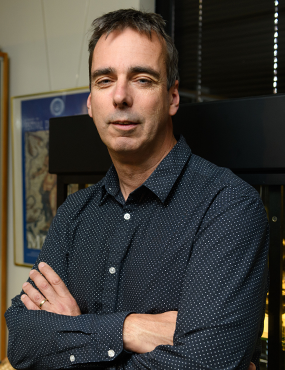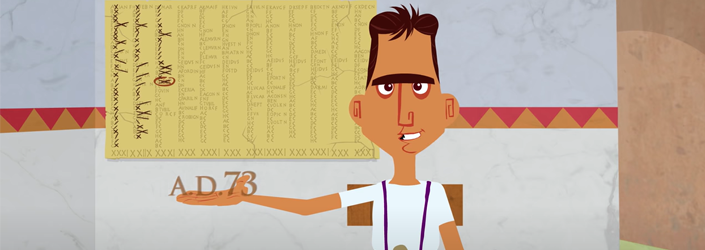Eight years ago, Professor Ray Laurence narrated an animated video depicting teenage life in ancient Rome. This video has just clocked up 10 million views on YouTube. Ray shares his thoughts on the runaway success of the series.
What inspired you to start making these videos?
I’d been involved in 20 TV documentaries about Roman history and found many of these programmes light on content, and also archaeology does not move. Thus, when I saw a film made by the company Cognitive, I realised that animation was a far better medium to get messages across in a shorter time frame than a 50 minute TV documentary. I was also asked by my kids' school in the UK to come in and give a lesson to their class in Year 3, so much of the script comes from explaining what it would be like to be a child in Rome. Many of the themes were in those lessons, but also some content was added, for example the colours of clothes, which was a question I was asked by a 7 year old. I also made these for my two sons at the time.
Why do you think the videos have proven so popular with audiences?
I’ve discussed this quite a lot with high school students and their teachers. They like the quirky nature of the films and have found some of the characters release an emotional response. The torturer in the second film who has a shave early on at the barber is identified as absolutely terrifying. It is extraordinary to work with animators, who quite literally bring my words to life and can visualise my ideas. The key really lies in the quality of the drawing underwritten by academic research. I think also I was very lucky to work with really talented artists, whose ability to create visual stories brings to life the script and inserts visual twists.
What can we learn from their success about getting people interested in ancient history?
There is a real need to have good content available for schools and to ensure that films are content-rich, rather than content-light. The films cover multiple topics: arranged marriages, living conditions in Rome, slavery, politics, emperors and growing up. Hence, there are multiple ways to use them and to see the other things that may emerge. The films make ancient history accessible. It is what we do at Macquarie University in lectures, tutorials and online, and it is what High School teachers do. So, really the animated films are just an extension of that process and make ancient history available to a much wider worldwide audience.
Has anything surprising resulted for you from their popularity?
Just before I came to Macquarie, I ran an animation script-writing competition for 14-15 year old school students. This was an extraordinary way to capture how young people see the Roman world. One script had a rap halfway through it and another charted the journey of people from West Africa to become Roman soldiers. The winning entry was made into a film called A Day in the Life of a Roman Client made by a brilliant animation student – Malachi James. He carefully created the central character around the image of the author.
Are you planning to create more videos?
There is a plan. Also, we did make some quite different films after the two for TED.Ed: one about a Roman nursing goddess; another about what is humanities research? and from 2016 just before the Brexit vote a film on migration’s contribution to British History. Andrew Park from Cognitive and myself talk every January and even met in San Diego in 2019 - there is no shortage of ideas and plans, but there is less time and money for either of us to get the project going – from fund-raising to doing the work. One day, we will get this sorted out – in the meantime – anyone watching the films will have to use their imagination to find out what might have happened to Lucius and the Domitia sisters!
Professor Ray Laurence is the head of the Department of Ancient History at Macquarie.
